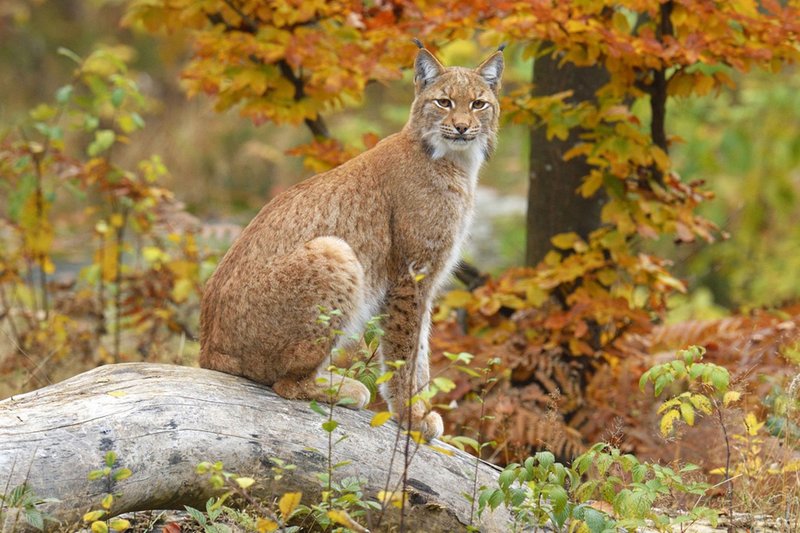
So, what do you do? It’s kind of like running into an old friend you haven’t seen in years. You want to be calm, cool, and collected, but you also need to know the best way to handle the situation. Understanding lynx behavior and knowing how to react can make all the difference in ensuring a safe experience for both you and the animal. Let’s dive into this fascinating topic and get you prepared for any chance encounters with these stunning wildcats.
Understanding Lynx Behavior
Lynxes are solitary animals that prefer to keep their distance from humans. They’re skilled hunters known for their amazing night vision and large tufted ears, which help them hear even the faintest sounds. When you spot one, it’s essential to remember that they usually want to avoid you just as much as you might want to avoid them.
You might wonder how to differentiate a lynx from other wild cats. Lynx are medium-sized with long legs and a short tail, giving them a distinctive appearance. They tend to be wary of people, and their first instinct is often to flee. However, if a lynx feels cornered or threatened, it may behave defensively. This is why understanding its body language is crucial. Look for signs like raised fur, hissing, or an unsteady posture. Those signs indicate that the lynx feels threatened and may act out.
If you happen to encounter a lynx, it’s essential to stay calm. This isn’t the time to panic or make sudden movements. Instead, take a deep breath and assess the situation.
Assessing the Situation
When you spot a lynx, the first thing to do is take a moment to gauge its behavior. Is it calmly observing you, or does it seem agitated? Pay attention to your surroundings, too. Are there any obstacles between you and the lynx, or are you in an open space?
If the lynx seems relaxed, it might just be curious about your presence. In this case, you can enjoy the moment from a safe distance. You might feel tempted to take out your phone for a quick photo, but keep in mind that getting too close can stress the animal.
If the lynx appears uneasy or agitated, the best course of action is to slowly back away. It’s crucial not to turn your back on the animal or run, as sudden movements can trigger a chase response. Instead, back away calmly and keep an eye on the lynx until you’re at a safe distance.
Keeping Your Distance
Safety should always be your top priority when encountering a wild animal. Lynx, while not typically aggressive, can be unpredictable—especially if they feel threatened. You want to create space and avoid any chance of an altercation.
How far should you keep your distance? A safe rule of thumb is to stay at least 100 yards away from the lynx. This distance allows you to observe without disturbing the animal. If possible, find a sturdy tree or rock to put between you and the lynx while you move away. This will make you feel safer and provide a barrier if needed.
If you’re hiking in areas known to have lynx, consider bringing binoculars instead of a camera. This way, you can enjoy watching them without putting yourself in a vulnerable position.
Making Noise
You might think that being quiet is the best option when encountering a lynx. While it’s true that loud noises can startle wildlife, making some gentle noise can actually help in this situation. If you notice a lynx nearby, a soft, calm voice can let it know you’re human and not a threat.
Talking or making soft noises can reassure the lynx. Just avoid any sudden loud sounds. Remember, you’re not trying to scare the animal away; you’re simply communicating. This can be particularly helpful if you’re with a group of people or have children. Keeping the atmosphere calm and friendly can make a big difference.
If you’re hiking alone and find yourself close to a lynx, simply talking to yourself can help keep both you and the lynx at ease.
What Not to Do
While it’s helpful to know what to do, it’s equally important to understand what NOT to do when you encounter a lynx. For starters, don’t approach the animal—even if it looks relaxed. This could lead to a stressful situation for both of you.
Avoid feeding the lynx or trying to get its attention. Wild animals are best left in their natural habits without human interference. If you’re with pets, keep them on a leash and away from the lynx’s vicinity. Dogs can provoke wildlife, which might result in aggressive behavior from the lynx.
Lastly, refrain from attempting to scare the lynx away by throwing rocks or shouting. This can escalate the situation, leading to unforeseen consequences. Respect their space, and remember that they are wild creatures, not domestic animals.
When to Seek Help
Encounters with lynx are usually harmless, but if you ever feel threatened, it’s important to know when to seek help. If the lynx seems aggressive or if it doesn’t move away even after you’ve made some noise, it’s time to contact local wildlife authorities. They can provide guidance on how to handle the situation safely.
Moreover, if you feel that the lynx has established itself too close to human habitation, reporting it can help local wildlife agencies manage their habitats effectively. They can monitor the situation and ensure both public safety and the best interest of the animal.
Remember, staying calm and collected is key. You’re now armed with knowledge about what to do if you encounter a lynx in the wild!
Enjoying the Experience
Encountering a lynx can be an incredible moment, reminding us of the beauty of wildlife and the importance of preserving their habitats. If you approach the situation thoughtfully and respectfully, it can be a memorable experience.
Take a moment to appreciate the encounter. If the lynx retreats, observe its graceful movements, how it blends into the surroundings. Don’t forget to share your experience with friends or fellow hikers—after all, stories about nature have a way of connecting us.
By understanding how to handle these encounters, you’re not only ensuring your safety but also promoting cohabitation with wildlife. So the next time you find yourself in the wild and see a lynx, take a deep breath—you’ve got this!
Respect the animal, maintain your distance, and enjoy the beauty of Mother Nature at her finest.

